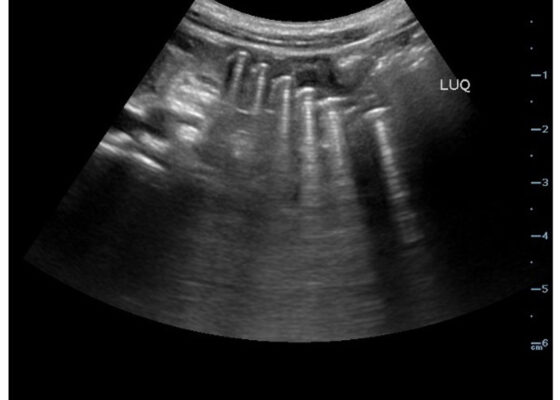Posts by JETem
Ventricular Tachycardia
DOI: https://doi.org/10.21980/J8KD2RAt the conclusion of the simulation session, learners will be able to: 1) identify the different etiologies of VT, including structural heart disease, acute ischemia, and acquired or congenital QT syndrome; 2) describe confounding factors of VT, such as electrolyte abnormalities and sympathetic surge; 3) describe how to troubleshoot an unsuccessful synchronized cardioversion, including checking equipment connections, increasing delivered energy, and changing pad placement; 4) compare and contrast treatments of VT based on suspected underlying etiology; 5) describe reasons to activate the cardiac catheterization lab other than occlusive myocardial infarction; and 6) identify appropriate disposition of the patient to the cardiac catheterization lab.
Inhalational Injury Secondary to House Fire
DOI: https://doi.org/10.21980/J8TW7NAt the conclusion of the simulation session, learners will be able to: 1) recognize the indications for intubation in a thermal burn/inhalation injury patient; 2) develop a systematic approach to an inhalational injury airway; and 3) recognize indications for transfer to burn center.
Little Patients, Big Tasks – A Pediatric Emergency Medicine Escape Room
DOI: https://doi.org/10.21980/J89W70By the end of this small group exercise, learners will be able to: 1) demonstrate appropriate dosing of pediatric code and resuscitation medications; 2) recognize normal pediatric vital signs by age; 3) demonstrate appropriate use of formulas to calculate pediatric equipment sizes and insertion depths; 4) recognize classic pediatric murmurs; 5) appropriately diagnose congenital cardiac conditions; 6) recognize abnormal pediatric electrocardiograms (ECGs); 7) identify life-threatening pediatric conditions; 8) demonstrate intraosseous line (IO) insertion on a pediatric model; and 9) demonstrate appropriate use of the Neonatal Resuscitation Protocol (NRP®) algorithms.
Point-Of-Care Ultrasound Use for Detection of Multiple Metallic Foreign Body Ingestion in the Pediatric Emergency Department: A Case Report
DOI: https://doi.org/10.21980/J83D2DBedside POCUS was performed on the patient’s abdomen using the curvilinear probe. The left upper quadrant POCUS image demonstrates multiple hyperechoic spherical objects with shadowing and reverberation artifacts concerning multiple foreign body ingestions. Though the patient and mother initially denied knowledge of foreign body ingestion, on repeated questioning after POCUS findings, the patient admitted to his mother that he ate the spherical magnets he received for his birthday about one week ago. The patient swallowed these over the course of two days. The presence of multiple radiopaque foreign bodies was confirmed with an abdominal X-ray.
Sonographic Retrobulbar Spot Sign in Diagnosis of Central Retinal Artery Occlusion: A Case Report
DOI: https://doi.org/10.21980/J8735PThe bedside ocular ultrasound (B-scan) was significant for small, hyperechoic signal (white arrow) in the distal aspect of the optic nerve, concerning for embolus in the central retinal artery. Subsequent direct fundoscopic exam was significant for a pale macula with cherry red spot (black arrow), consistent with central retinal artery occlusion (CRAO).
Everyday Water-Related Emergencies: A Didactic Course Expanding Wilderness Medicine Education
DOI: https://doi.org/10.5072/FK2HX1GX76By the end of the session, the learner will be able to: 1) describe the pathophysiology of drowning and shallow water drowning, 2) prevent water emergencies by listing water preparations and precautions to take prior to engaging in activities in and around water, 3) recognize a person at risk of drowning and determine the next best course of action, 4) demonstrate three different methods for in-water c-spine stabilization in the case of a possible cervical injury, 5) evaluate and treat a patient after submersion injury, 6) appropriately place a tourniquet for hemorrhage control, and 7) apply a splint to immobilize skeletal injury.
Alcohol Withdrawal with Delirium Tremens
DOI: https://doi.org/10.21980/J8S35NBy the end of the session, learner will be able to 1) discuss the causes of altered mental status, 2) utilize CIWA scoring system to quantify AW severity, 3) formulate appropriate treatment plan for AW by treating with benzodiazepine and escalating treatment appropriately, 4) treat electrolyte abnormalities by giving appropriate medications for hypokalemia and hypomagnesemia, and 5) discuss clinical progression and timing to AW.
Headache Over Heels: CT Negative Subarachnoid Hemorrhage
DOI: https://doi.org/10.21980/J8ND2CBy the end of this case, the participant will be able to: 1) construct a broad differential diagnosis for a patient presenting with syncope, 2) name the history and physical exam findings consistent with SAH, 3) identify SAH on computer tomography (CT) imaging, 4) identify the need for lumbar puncture (LP) to diagnose SAH when CT head is non-diagnostic > 6 hours after symptom onset, 5) correctly interpret cerebral fluid studies (CSF) to aid in the diagnosis of SAH, and 6) specify blood pressure goals in SAH and suggest appropriate medication management.
A Homemade, Cost-Effective, Realistic Pelvic Exam Model
DOI: https://doi.org/10.21980/J8HM0FAfter utilizing this pelvic examination model, the learner will be able to: 1) demonstrate ability to perform a pelvic examination comfortably and safely, 2) demonstrate ability to obtain a cervical swab on female patients, and 3) show proficient understanding of female anatomy.
Acute Pulmonary Edema and NSTEMI
DOI: https://doi.org/10.21980/J8CW67At the end of this practice oral boards case, the learner will: 1) recognize unstable vital signs (VS) and intervene to stabilize ventilation and oxygenation, 2) demonstrate the ability to obtain a complete medical history including the important characteristics of chest pain, 3) demonstrate an appropriate exam on a patient, 4) order the appropriate evaluation studies for a patient with complaints of dyspnea, 5) interpret the results of diagnostic evaluation and diagnose Non- ST elevation myocardial infarction (NSTEMI) and pulmonary edema, 6) order appropriate management of pulmonary edema and NSTEMI, and 6) demonstrate effective communication with patient and family members.


